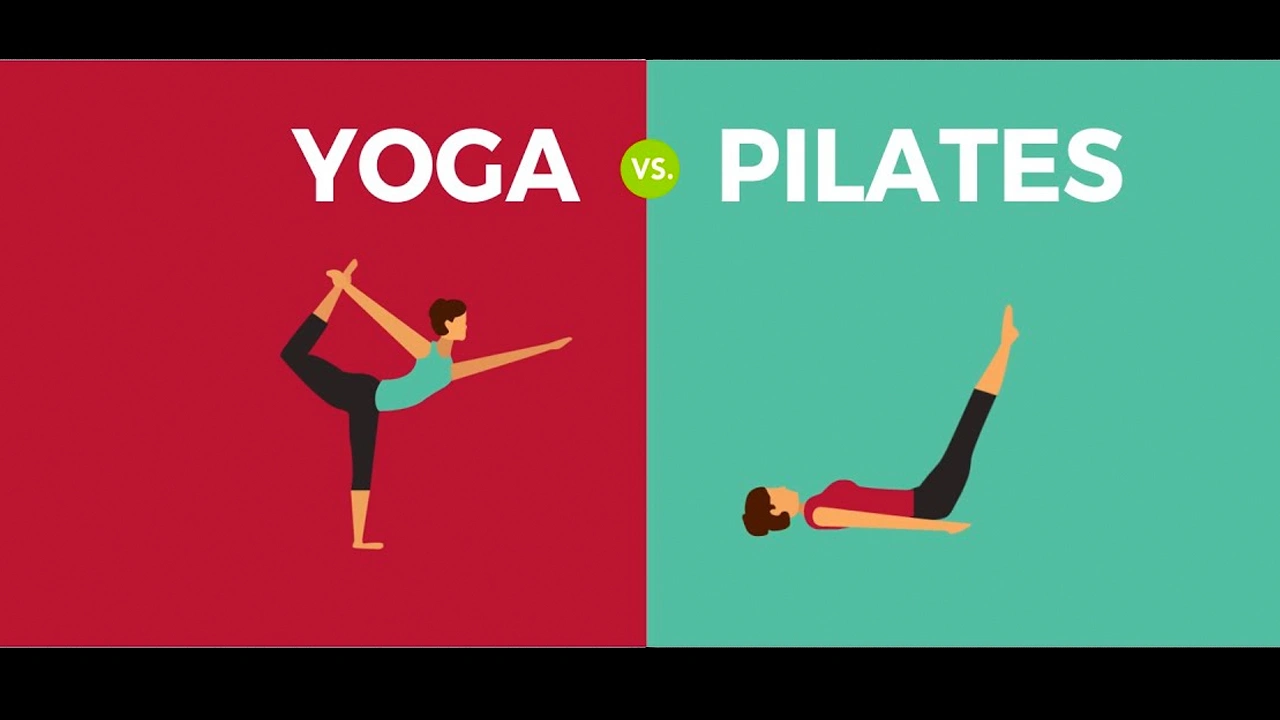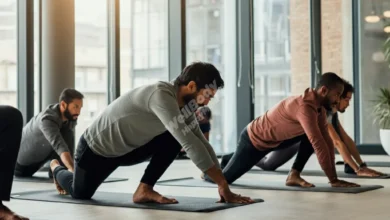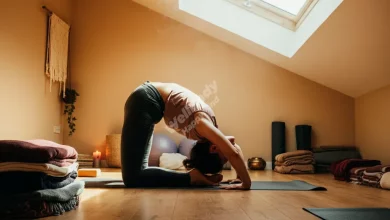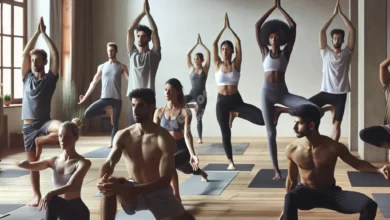How Does Yoga Compare to Pilates for Core Strengthening?

Did you know that a strong core can be the key to unlocking better overall health and fitness? It’s true! In recent years, both yoga and Pilates have surged in popularity as effective methods for building core strength. But which one is right for you?
Imagine standing taller, moving with ease, and feeling more confident in your daily life. That’s the power of a strong core. In this post, we’ll dive deep into the world of yoga vs Pilates core strengthening, helping you make an informed decision about which practice might best suit your needs.
Understanding Core Strength
What Are Core Muscles?
Your core is more than just your abs. It’s a complex group of muscles that includes:
- Abdominal muscles (including the “six-pack”)
- Lower back muscles
- Pelvic floor muscles
- Diaphragm
Think of your core as a sturdy cylinder that supports your entire body. It’s the foundation of all movement, from picking up groceries to perfecting your golf swing.
Why Core Strength Matters
A strong core is crucial for:
- Improved posture: Say goodbye to slouching and hello to a more confident stance.
- Better balance: Reduce your risk of falls and injuries.
- Enhanced athletic performance: Whether you’re a weekend warrior or a pro athlete, a strong core can boost your game.
- Reduced back pain: Many people find relief from chronic back pain through core strengthening.
- Easier daily activities: From tying your shoes to reaching for that top shelf, a strong core makes life smoother.
Common Misconceptions About Core Strength
Let’s bust some myths:
- Myth: You need to do hundreds of crunches for a strong core.
Truth: Varied exercises targeting all core muscles are more effective. - Myth: A flat stomach equals a strong core.
Truth: Core strength isn’t about appearance; it’s about function. - Myth: Core exercises are only for athletes.
Truth: Everyone can benefit from core strengthening, regardless of fitness level.
Now that we understand the importance of core strength, let’s explore how yoga and Pilates can help us achieve it. Both practices offer unique approaches to core strengthening exercises, but they differ in their methods and philosophies.
In the next sections, we’ll dive deeper into each practice, comparing their techniques and benefits. Whether you’re a yoga enthusiast, a Pilates devotee, or new to both, you’ll gain valuable insights to help you on your core strengthening journey.
Are you ready to discover which practice might be your perfect core-strengthening match? Let’s continue our exploration of yoga and Pilates!
Yoga for Core Strengthening
Overview of Yoga
Yoga is an ancient practice that originated in India thousands of years ago. It’s not just about physical postures; it’s a holistic approach to wellness that combines:
- Physical poses (asanas)
- Breathing techniques (pranayama)
- Meditation and mindfulness
Yoga has evolved into various styles, each with its unique focus:
- Hatha: A gentle, slow-paced style perfect for beginners
- Vinyasa: Flowing movements synchronized with breath
- Ashtanga: A more rigorous, physically demanding practice
- Iyengar: Focuses on precise alignment and often uses props
- Power Yoga: A fitness-based approach derived from Ashtanga
Yoga Poses for Core Strength
While many yoga poses engage the core, some are particularly effective for core strengthening:
- Plank Pose (Phalakasana)
- Technique: Hold a push-up position, keeping your body in a straight line
- Muscles engaged: Abdominals, obliques, lower back
- Boat Pose (Navasana)
- Technique: Balance on your sit bones, lifting your legs and upper body to form a V-shape
- Muscles engaged: Deep abdominal muscles, hip flexors
- Chaturanga Dandasana (Four-Limbed Staff Pose)
- Technique: Lower from plank pose, keeping elbows close to the body
- Muscles engaged: Abdominals, chest, arms
- Side Plank (Vasisthasana)
- Technique: Balance on one arm, stacking feet and lifting hips
- Muscles engaged: Obliques, shoulders, arms
- Warrior III (Virabhadrasana III)
- Technique: Balance on one leg, extending the other leg back and arms forward
- Muscles engaged: Entire core, back, legs
Benefits of Yoga for Core Strength
Yoga offers several unique advantages for core strengthening:
- Holistic approach: Yoga doesn’t just target your core; it strengthens your entire body and mind.
- Mind-body connection: The focus on breath and mindfulness helps you engage your core more effectively.
- Improved flexibility: While strengthening your core, yoga also enhances overall flexibility and balance.
- Stress reduction: The meditative aspects of yoga can help reduce stress, which can contribute to better overall health.
Pilates for Core Strengthening
Overview of Pilates
Pilates is a newer practice, developed in the early 20th century by Joseph Pilates. It focuses on:
- Core strength
- Flexibility
- Posture
- Breath control
There are two main types of Pilates:
- Mat Pilates: Performed on a mat using body weight for resistance
- Reformer Pilates: Uses a specialized machine called a reformer for added resistance
Pilates Exercises for Core Strength
Pilates is renowned for its core-focused exercises. Here are some key moves:
- The Hundred
- Technique: Lie on your back, lift head and shoulders, pump arms while holding legs in tabletop position
- Muscles engaged: Abdominals, hip flexors
- Roll-Up
- Technique: Slowly roll up from lying position to sitting, then roll back down
- Muscles engaged: Abdominals, back muscles
- Teaser
- Technique: Balance on sit bones with legs and upper body lifted in a V-shape
- Muscles engaged: Deep abdominal muscles, hip flexors, back
- Pilates Scissor
- Technique: Lie on back, lift head and shoulders, alternate lifting and lowering legs
- Muscles engaged: Lower abdominals, hip flexors
- Plank to Side Plank
- Technique: Start in plank, rotate to side plank, then return to plank
- Muscles engaged: Entire core, shoulders, arms
Benefits of Pilates for Core Strength
Pilates offers several advantages for core strengthening:
- Focused core work: Pilates exercises are specifically designed to target the core muscles.
- Precision and control: The emphasis on slow, controlled movements helps build deep core strength.
- Improved posture: Pilates’ focus on alignment can lead to better posture in daily life.
- Low-impact workout: Pilates is gentle on the joints, making it suitable for many fitness levels.
In the next section, we’ll directly compare yoga and Pilates for core strengthening, helping you decide which might be the best fit for your fitness goals. Are you ready to see how these two powerful practices stack up against each other?
Yoga vs. Pilates: A Comparison for Core Strengthening
Now that we’ve explored both yoga and Pilates, let’s put them side by side to see how they compare when it comes to core strengthening.
Similarities
Despite their different origins, yoga and Pilates share some common ground:
- Mind-body connection: Both practices emphasize the link between mental focus and physical movement.
- Emphasis on breathing: Proper breathing techniques are crucial in both yoga and Pilates.
- Improved flexibility: While strengthening the core, both practices also enhance overall flexibility.
- Low-impact nature: Both are generally gentle on the joints, making them suitable for various fitness levels.
Differences
While yoga and Pilates both offer excellent core strengthening exercises, they differ in several key aspects:
| Aspect | Yoga | Pilates |
|---|---|---|
| Breathing Techniques | Varied techniques (e.g., ujjayi, kapalabhati) | Focused on lateral breathing |
| Equipment | Minimal (mat, blocks, straps) | Can involve specialized equipment (e.g., reformer) |
| Spiritual Component | Often includes meditation and spiritual elements | Generally focuses solely on physical practice |
| Variety of Exercises | Wide range of poses targeting various body parts | More focused on core-centric movements |
| Intensity of Core Work | Varies by style, can be intense in power yoga | Consistently high focus on core in most exercises |
Choosing Between Yoga and Pilates
Deciding between yoga and Pilates for core strengthening depends on several factors:
Personal fitness goals:
- Choose yoga if you want a more holistic approach that includes flexibility and stress reduction.
- Opt for Pilates if your primary focus is on core strength and posture improvement.
Physical limitations:
- Yoga might be better if you have joint issues, as it offers more modifications.
- Pilates could be preferable if you need a more structured approach to building core strength.
Workout style preferences:
- If you enjoy variety and flowing movements, yoga might be more appealing.
- If you prefer precise, controlled exercises, Pilates might be your best bet.
Available time and resources:
- Yoga can be practiced easily at home with minimal equipment.
- Pilates, especially reformer Pilates, might require access to a studio or specialized equipment.
Combining Yoga and Pilates
Who says you have to choose just one? Many fitness enthusiasts find benefits in combining both practices. Here’s why:
- Complementary strengths: Yoga’s flexibility work can enhance your Pilates practice, while Pilates’ core focus can improve your yoga poses.
- Varied workout routine: Alternating between yoga and Pilates keeps your exercise regimen interesting and challenges your body in different ways.
- Comprehensive fitness approach: Together, they offer a well-rounded program addressing strength, flexibility, and mind-body connection.
Tips for Creating a Balanced Routine
- Start with 2-3 sessions per week, alternating between yoga and Pilates.
- Listen to your body and adjust the intensity as needed.
- Consider taking classes in both disciplines to learn proper form and technique.
- Gradually increase the frequency and duration of your sessions as your strength and stamina improve.
Remember, whether you choose yoga, Pilates, or a combination of both, consistency is key to seeing results in your core strength.
In our final section, we’ll wrap up our comparison and offer some parting thoughts on your core strengthening journey. Are you excited to get started on your path to a stronger core?
Conclusion: Your Path to a Stronger Core
We’ve journeyed through the worlds of yoga and Pilates, exploring how each practice contributes to core strengthening. Let’s recap the key points we’ve discovered:
- Both yoga and Pilates are effective: Each offers unique approaches to building core strength, improving flexibility, and enhancing overall well-being.
- Yoga provides a holistic approach: It combines physical postures with breathing techniques and meditation, offering benefits beyond just core strength.
- Pilates focuses intensely on the core: With its precise, controlled movements, Pilates consistently targets the core muscles in most exercises.
- Personal preference matters: The best choice between yoga and Pilates often comes down to individual goals, physical condition, and workout style preferences.
- Combining practices can be beneficial: Many people find value in incorporating both yoga and Pilates into their fitness routines for a well-rounded approach.
Remember, the journey to a stronger core is not just about achieving a toned midsection. It’s about improving your overall quality of life. A strong core can lead to:
- Better posture and reduced back pain
- Improved balance and stability
- Enhanced athletic performance
- Increased confidence in daily activities
Whether you choose yoga, Pilates, or a combination of both, the most important factor is consistency. Regular practice is key to seeing and feeling results.
Your Next Steps
Now that you’re armed with knowledge about yoga vs Pilates core strengthening, it’s time to take action:
- Try a class: If you’re new to both practices, consider trying a beginner’s class in yoga and Pilates. Many studios offer free or discounted trial sessions.
- Start at home: There are numerous online resources and videos for both yoga and Pilates. Start with short, beginner-friendly sessions to get a feel for each practice.
- Listen to your body: Pay attention to how you feel during and after each practice. This will help you determine which approach resonates best with you.
- Be patient: Building core strength takes time. Commit to your chosen practice for at least a few weeks before evaluating its effectiveness for you.
- Consult a professional: If you have any health concerns or physical limitations, consult with a healthcare provider or certified fitness instructor before starting a new exercise regimen.
Remember, the best core strengthening routine is one that you enjoy and can stick with long-term. Whether it’s the mindful flow of yoga, the precise control of Pilates, or a mix of both, your journey to a stronger core starts now.
We’d love to hear about your experiences with yoga and Pilates for core strengthening. Share your thoughts, questions, or success stories in the comments below!
Are you ready to embark on your core strengthening journey? Your stronger, more confident self is waiting. Let’s get started!



